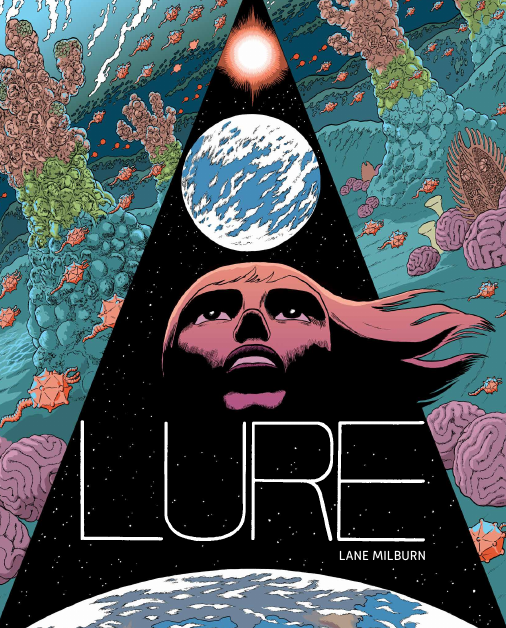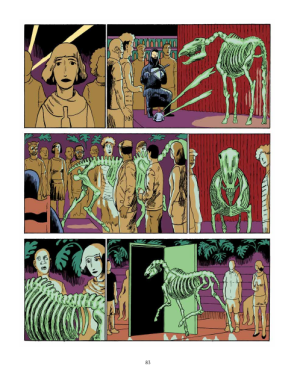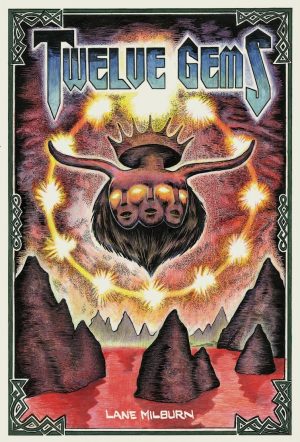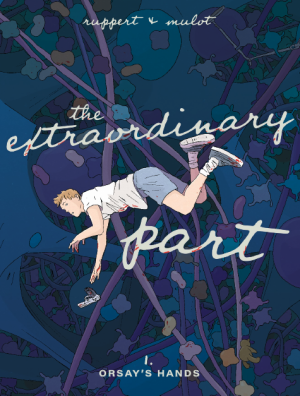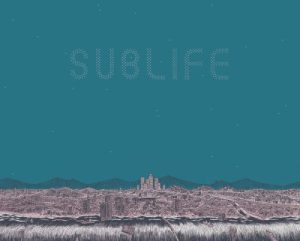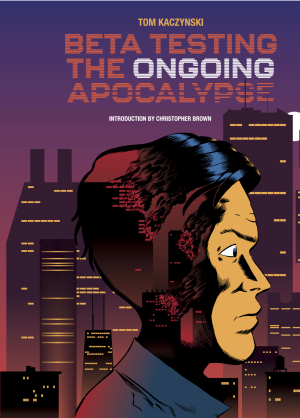Review by Karl Verhoven
Jo is an artist who’s been selected to travel to Lure, a planet now being colonised by the elite to escape Earth’s damaged climate. Despite that, the world shown by Lane Milburn over the first quarter of Lure is barely differentiated from our own, although he instils a sense of foreboding via the inclusion of prologue pages showing a deity arriving on Earth and terraforming it. It’s not until Jo arrives at the P company’s headquarters that the future actually manifests.
Jo works in the relatively new form of creative holographics, and is to be part of team tasked with creating a holoshow for the opening of a convention for the rich and influential. She’s transported to Lure, and gradually comes to know the people she’s working with via an integration programme and socialising.
Lure isn’t going to be for everyone. For a graphic novel that starts with the line “How the deity came to Earth in the time when Earth was still young” Milburn is determined to make life ordinary, almost uninspiring. For all the allure of Lure, once there the realisation dawns that to a large extent it’s humanity that shapes a planet, and by the time Jo arrives a gift shop already flourishes in living quarters resembling a combination of hotel and shopping mall. There are inbuilt uncertainties to Lure, but they only ever amount to speculation, such as the idea that because everyone is put to sleep for transportation to Lure, how can anyone be sure where they actually are on awakening?
Where Milburn really shines is in the conceptual art delineating a different planet and the possibilities it offers. He revels in providing utopian scenery, brightly coloured and the possibilities of alien formations, for which Moebius is an influence. The holographic sequences are restricted, but also memorable.
Disappointingly, though, little of the narrative is. The primary cast members discuss their hopes and concerns in a way tailored to fit the theme of humanity shaping the environment, and the new world being the same as the old, but it’s laboured and dull. You’ll wish Milburn would pick up the pace and discard the mundane conversations because when he lets his visual imagination fly you can sink into the illustrations and imagine there may be a better future.
A move into conspiracy theory thriller occupies the final fifth of Lure, and there’s briefly something other than the illustration to admire, but in keeping with the tone throughout Millburn opts for the elusive ending rather than the definitive. It seals a book of possibilities that could have been so much more.
